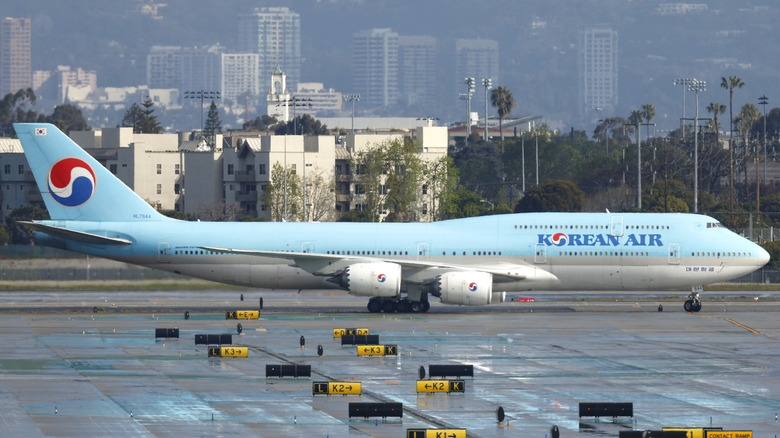Why Does The Boeing 747 Have A Hump?
If you've ever seen what looks like a beluga whale with wings on the runway — or better yet, flown in one — there's a good chance it was the Boeing 747, nicknamed the "Queen of the Skies." This four-engined beauty first took to the skies on Feb. 9, 1969, and entered service with Pan Am a year later. It has an unmistakable silhouette with a wide body, long fuselage, and most notably, that proud hump at the front.
Most commercial jets follow a pretty standard design language, but the 747 breaks the mold with that unusual upper deck. Sure, aircraft like the Airbus A380 may have full-length double decks, but the 747's iconic profile remains one of a kind.
Of course, the shape wasn't meant just to turn heads; it came from real needs in the aviation world of the 1960s. As air traffic ballooned, airlines needed something bigger than the Boeing 707, which was one of the most successful models of the time. The result was a bold leap in aircraft design.
How a backup plan became iconic
Boeing, already working on the 737 and juggling multiple projects, got pulled into a gamble led by Pan Am CEO Juan Trippe in the '60s. Trippe didn't just want a jet for more passengers — he wanted flexibility. If this massive aircraft didn't work out for passengers, he wanted the option to convert it to carry cargo.
At the time, Boeing was chasing dreams of supersonic glory with the Boeing 2707, its answer to the Concorde. The company believed the 747's reign as a passenger jet would be short, expecting it to soon be replaced with supersonic transport. So the 747 was designed for a smooth transition to life as a cargo plane, with a nose that would swing open for loading freight through the front. The only problem was that the cockpit would get in the way.
The engineers came up with an ingenious solution: placing the flight deck up top. This gave them the freedom to install a hinge at the front, allowing future cargo nose-loading. The original cockpit design was a rounded dome sitting atop the fuselage, but it caused drag. So Boeing extended it backward, tapering it off.
That upper deck was originally meant for pilots and some couches. But as oil prices skyrocketed due to the 1973 crisis and airlines needed more revenue per flight, they scrapped the fancy lounges and filled the hump with first-class seats. The configuration changed over time, but that cargo-ready foundation never did.
What comes next for the Queen of the Skies
While the 747 remains one of aviation's most beloved aircraft, its future has become a question of practicality. The supersonic dreams Boeing once bet on never materialized in a meaningful way. Interesting Boeing concept planes like the Sonic Cruiser came and went, and the original Concorde supersonic jet failed, ending quietly in 2003. So for now, the passenger skies remain subsonic.
Meanwhile, the 747 has quietly evolved into one of the most capable freighters on Earth. As a cargo hauler, its unique design gives it loading flexibility no other aircraft can match. That swinging nose door continues to be a game changer for logistics, allowing easy transport of oversized and long pieces of cargo that wouldn't fit through traditional doors. So it's no surprise that cargo airlines like Cargolux still operate dozens of them. As it has turned out, Juan Trippe's "just in case" design philosophy was right all along.
That said, the plane's passenger versions are slowly being retired. Boeing wants to pass the baton on to the twin-engine Boeing 777X, even as its deliveries have seen massive delays. Still, the hump that came into being as a workaround for a cargo hinge lives on as a legendary design.


